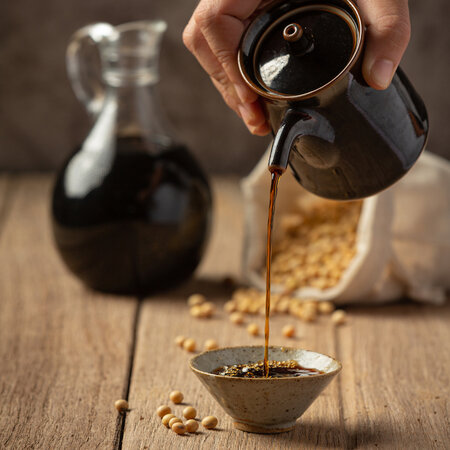Koikuchi Shoyu
Aromatic with rich flavours, Koikuchi Shoyu is the go-to soy sauce for most Japanese dishes. (Photo from: Normman)
This is the most common type of soy sauce in Japan, accounting for about 80% of domestic production. Koikuchi is probably the shoyu that most of us are familiar with as well. It is made with almost equal parts of soybeans and wheat, with a salt concentration of about 16%.
Discerning palates would have realised that besides saltiness, there is a mellow sweetness, subtle acidity and deep umami flavours. Reddish-dark brown in colour, Koikuchi shoyu has a wide range of uses and can be said to be truly versatile.
At the table, Koikuchi shoyu makes a great dipping sauce and in the kitchen, it is a wonderful seasoning for most Japanese recipes. If you are a novice Japanese cook, you will not go wrong with this all-purpose soy sauce.
Shiro Shoyu
Shiro Shoyu is popular among chefs for its ability to add flavour without overpowering a dish. (Photo from: Wiki public domain)
Also known as white soy sauce, the lightest of all the soy sauce family is the Shiro shoyu. Hailing from the Hekinan district of Aichi prefecture, this pale golden soy sauce has the lightest and clearest colour because it is fermented for a shorter time.
Although it has the lightest colour, its salt concentration is as high as 18%. Using wheat as its main ingredient and a small portion of soybean, Shiro shoyu has milder umami flavours but a unique sweetness.
Shiro soy sauce does not change the colour of dishes, making it a useful seasoning in cooking and preserving the tastes of original ingredients. It can be regarded as a more flavourful substitute for salt and is good to make clear soups, tamagoyaki (sweet omelette roll) and takikomi gohan (seasoned rice).









